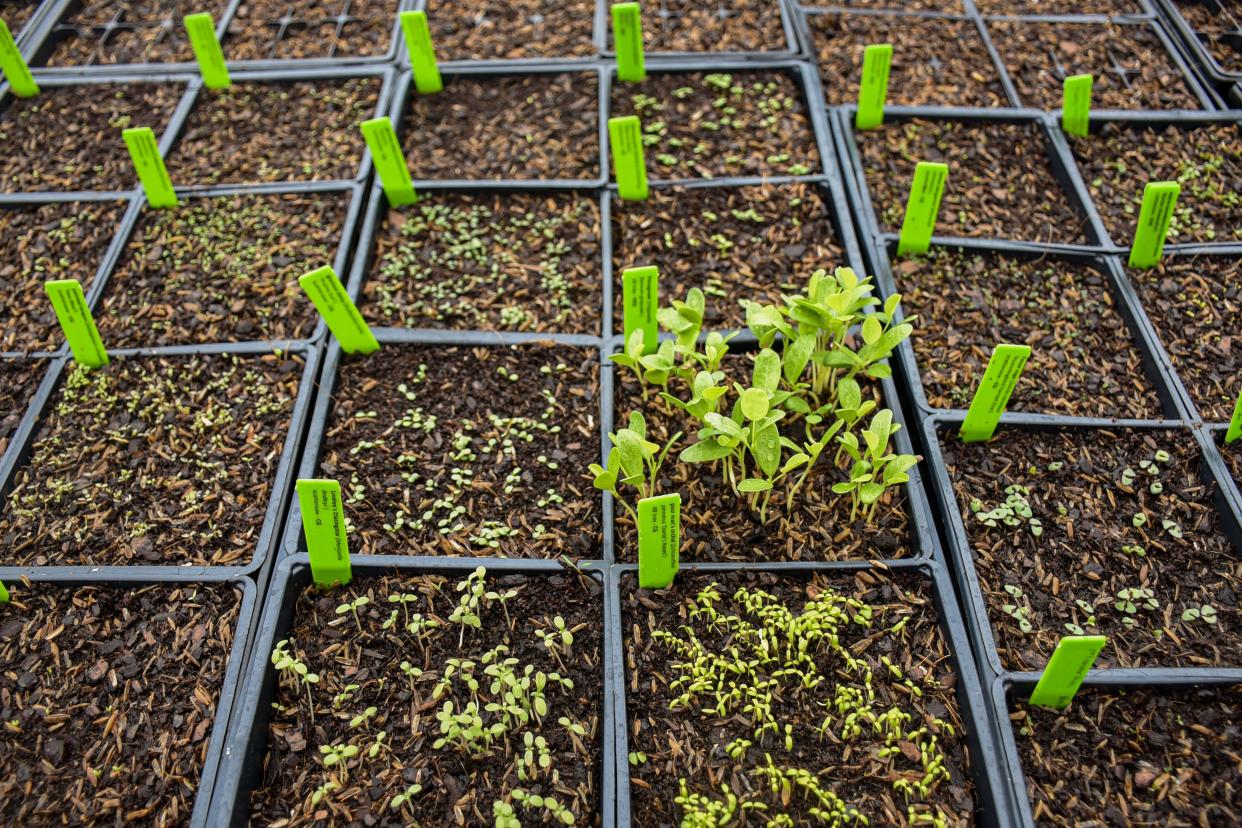'As winter thaws into spring': A good time to start seeds indoors

Every year, as winter thaws into spring, I get the annual urge to start an herb and vegetable garden. The rows of colorful seed packets lining racks in the stores look so full of promise and potential they drive all memory of past seed starting failures out of my mind. The time the cat ate my peas before I could get them outside. The chamomile, scatter-sown, that never came up. Saddest of all, the peppers — an assortment of pepper seeds I hoped would produce fruits for fiery hot sauces. While the seeds did germinate in my containers indoors, the seedlings yellowed after setting their first leaves. Maybe fate wasn’t in favor of the Scotch bonnets, but more likely than not, their failure had a different source. My enthusiasm for the end goal made me overlook a few key things my seeds needed to get there.
In Massachusetts, mid-March is a good time to start seeds indoors. Without dedicated grow lights, you need a sunny (preferably cat-free) windowsill to do this. A south-facing window with at least six hours of sunlight a day gives seeds their best shot at germinating and setting leaves, Dawn Davies tells me. Dawn is a horticulturist and colleague at New England Botanic Garden at Tower Hill. While six hours of sunlight may work for cool-season crops like lettuces, broccoli, peas, and brussels sprouts, warm-season, fruit bearing crops like tomatoes, squashes, and melons need even more exposure. If your seedlings aren’t getting enough sun, they’ll tell you, Dawn says. They’ll become etiolated, meaning they’ll lose vigor, paling or yellowing like my peppers. They’ll even stretch out, the distance between the soil surface and the first set of leaves elongating so much that the seedlings topple over.
More:More of a good thing: Tips for propagating house plants
More:Gardening Central Mass.: Finding joy at the bottom of a compost pile
Space in the ground is almost as important as space in the sun. Eventually, seedlings started indoors will need to move out. The back of a seed packet contains guidance on how much growing space a plant needs. It’s important to follow these instructions both when transplanting seedlings and when sowing seeds directly into a garden bed. If your veggies are destined for containers, be careful not to underestimate the amount of soil media fruit producing plants require. While leafy greens and herbs work well in window boxes, tomatoes and eggplant need at least a five-gallon container per plant in order to spread their roots out.
If you’ve done your due diligence and planned for this year’s veggies with all the right space requirements in mind, other common pitfalls can still get in the way of seed-starting success. Seeds need to stay moist to germinate—moist but not swampy. If you plan to repurpose items from around the house to create your own seed starting containers, know that some materials work better than others when it comes to managing moisture. Cardboard dries out easily. For this reason, Dawn recommends plastic yogurt containers with holes punched into the bottom for drainage. Placing containers on a tray lined with pebbles also helps promote drainage and creates humidity. Watering from the bottom up through capillary action keeps delicate seedlings moist without enabling rot.
For indoor seed starting, Dawn also recommends using peat-free soil media. Peat, high carbon accumulations of partially decayed organic matter, forms naturally in bogs and peatlands. When peat is unearthed for use in potting soils, sequestered carbon is released into the atmosphere where it contributes to climate change. Beyond benefits to the planet, using peat-free media, some of which is a blend of compost and rice hulls, helps reduce disease in seedlings. Unlike like topsoil or loam that you would find digging outside, this media is sterile, or pathogen free.
This spring may bring your first attempt at seed starting or your fiftieth. Either way, it’s important not to let failures get in the way of your drive to try again. Even experienced gardeners kill plants, suffer setbacks, and deal with failures from time to time. Gardening is the exercise of optimism, and it’s rewarded when you think of all the joy that can spring from the success of one little seed.
Gardening Central Mass. is written by the team at New England Botanic Garden at Tower Hill. Located on 171 acres in Boylston, New England Botanic Garden is one of the region’s top horticultural resources. All year long, garden visitors experience the wonder of plants, learn about the natural world, and make joyful connections. There is so much growing at the garden. Discover it today at www.nebg.org. The column will be published on the third Sunday of the month.
This article originally appeared on Telegram & Gazette: 'As winter thaws into spring': A good time to start seeds indoors

